*NURSING > EXAM > Chamberlain College of Nursing NR 509 APEA Neurology. Complete study Guide for Exam. A+ (All)
Chamberlain College of Nursing NR 509 APEA Neurology. Complete study Guide for Exam. A+
Document Content and Description Below
Question 1: Sudden, brief, rapid jerks, involving the trunk or limbs may be consistent with: a myoclonic seizure. Correct an absent seizure. a myoclonic atonic seizure. a focal seizure with ... impairment of consciousness. Explanation: A patient experiencing a myoclonic seizure manifests sudden, brief, rapid jerks, involving the trunk or limbs. A sudden brief lapse of consciousness with momentary blinking, staring, or movements of the lips and hands but no falling is consistent with an absent seizure. During a myoclonic atonic seizure, the patient experiences a sudden loss of consciousness with falling but no movements. Injury may occur. Focal seizures with impairment of consciousness the person appears confused. Automatisms include automatic motor behaviors such as chewing, smacking the lips, walking about, and unbuttoning clothes. Question 2: Which of the following neurological assessment findings indicate the need for further evaluation? Lifting one foot and then the other when the infant is held upright with the feet touching a solid surface Fanning and hyperextension of the toes when the sole is stroked upward from the heel Grasping a finger placed in the neonate's palm Weak and ineffective sucking movements Correct Explanation: Weak and ineffective sucking movements would indicate the need for further evaluation since any weak, absent, asymmetrical or fine jumping movements would suggest neurological system disorders. The other choices represent common reflexes found in the normal newborn: Babinski, grasping, and stepping. Question 3: An example of proximal weakness is: the right shoulder. Correct the right hand. both arms. Incorrect on the right side of the face. Explanation: There are 4 different patterns of weakness: Proximal, distal, symmetric, and asymmetric. An example of proximal weakness is weakness in the shoulder or hip girdle. Distal weakness occurs in the hands or feet. Symmetric weakness occurs in the same areas on both sides of the body. An asymmetric weakness occurs in a portion of the face or extremity - a form of focal weakness. Question: A female patient complains of weakness in her hand when opening a jar. This finding could be suggestive of which type of weakness pattern? ProximalDistal CorrectSymmetricAsymmetric Explanation: To identify distal weakness, ask about hand movements when opening a jar, can or using scissors or a screwdriver. Another example is a problems like tripping when walking. Question: A patient presents with an altered level of consciousness. He/she is considered in a stuporous state if he/she: appears drowsy but opens the eyes, looks at the examiners, answers the questions, and then falls asleep.arouses from sleep after exposure to painful stimuli, exhibits slow verbal responses, and easily lapses into an unresponsive state. Correctremains unarousable with eyes closed. There is no evident response to inner need or external stimuli.opens the eyes and looks at the examiner, but responds slowly and is somewhat confused. Explanation: A stuporous patient arouses from sleep after exposure to painful stimuli, verbal responses are slow, and lapses into an unresponsive state. A lethargic patient appears drowsy but opens the eyes, looks at the examiners, answers the questions, and then falls asleep. An obtunded patient opens the eyes and looks at the examiner, but responds slowly and is somewhat confused. A comatose patient remains unarousable with eyes closed. There is no evident response to inner need or external stimuli. Question: One way to assess cerebellar function would be to have the patient: hop on one foot. Correctread out loud. Incorrectshrug the shoulders.discriminate between light and sharp pain. Explanation: The cerebellar function tests are used to monitor the patient's sense of equilibrium, which includes the patient's gait (walk), ability to stand upright with eyes closed (Romberg test), touch finger to nose, and move the heel to opposite knee while lying down. Other examples also include: hopping on one foot, walking heel-to-toe, and touching the examiner's finger and the examinees' nose. Reading out loud tests visual acuity; shrugging shoulders assesses the spinal accessory nerve and discriminating pain between light and sharp assesses the sensory system. Question: Hypesthesia refers to: absence of touch sensation.decreased sensitivity to touch. Correctincreased sensitivity to touch. Incorrectabsence of pain sensation. Explanation: Anesthesia is absence of touch sensation; hypesthesia is decreased sensitivity to touch; hyperesthesia is increased sensitivity to touch; and analgesia refers to absence of pain sensation. Question: When conducting a neurologic exam, which one of the following assessments is not considered part of the mental status assessment? Level of alertnessCranial Nerve II (CNII) CorrectAppropriateness of responsesOrientation to time Explanation: When conducting a neurologic exam, mental status assessment should include evaluation of the level of alertness, appropriateness of responses, and orientation to person, place, and time. Assessing cranial nerve II would be part of the cranial nerve assessment. Question: A mother reports to the nurse practitioner that her teenager might be taking drugs because earlier today the teenager had a mild seizure and now has an unstable gait and is beginning to complain of shortness of breath. These symptoms might be consistent with a possible overdose of: barbiturates.amphetamines. Correctmarijuana.opioids. Explanation: Amphetamines are central nervous system (CNS) stimulants. The teenager could exhibit signs of ataxia, respiratory distress, seizures, coma, myocardial infarction, death if he/she consumed this substance. Impaired memory, judgment, and attention, slurred speech, drowsiness, and irritability are suggestive of central nervous system depressants (CNS). Barbiturates, alcohol and benzodiazepines fall in this class. Opioids may cause euphoria, drowsiness, constricted pupils and some of the same symptoms as CNS depressants. Marijuana intoxication would present with relaxation, euphoria, detachment, talkativeness, slowed perception of time, and possible anxiety or paranoia. Question: An ischemic stroke is: a transient episode of neurologic dysfunction by focal brain, spinal cord, or retinal ischemia, without acute infarction. Incorrectan infarction of the central nervous system tissue that may be silent or symptomatic. Correctthe abrupt onset of motor or sensory deficits.focal or asymmetric weaknesses caused by central and peripheral nerve damage. Explanation: Ischemic stroke is “an infarction of central nervous system tissue” that may be symptomatic or silent. TIA is now defined as “a transient episode of neurological dysfunction caused by focal brain, spinal cord, or retinal ischemia, without acute infarction.” The other terms are not related to the new definitions. Question: By placing the patient in the supine position, the nurse practitioner raises the patient's relaxed and straightened leg while flexing the leg at the hip, then dorsiflexes the foot. This maneuver is known as: Kernig's sign.the straight-leg raise. Correctthe plantar response.the ankle reflex. Explanation: By placing the patient in the supine position, the nurse practitioner raises the patient's relaxed and straightened leg while flexing the leg at the hip, then dorsiflexes the foot. This maneuver is known as the straight leg raise and is used to evaluate sciatica. It is positive if there is pain down the back of the leg below the knee. Ipsilateral calf wasting and weak ankle dorsiflexion may be present. Question: The level of consciousness that refers to the patient that appears drowsy but can open his eyes, respond to questions, then fall back to sleep is known as: obtundation.alertness.lethargy. Correctstupor. Explanation: Lethargy refers to the patient that appears drowsy but can open his eyes, respond to questions, then fall back to sleep. An obtunded patient opens his eyes, looks at the person speaking to him but responds slowly and appears confused. The level of consciousness that refers to the ability of the patient to respond fully and appropriately to stimuli is known as alertness. A stuporous patient arouses from sleep only after painful stimuli. [Show More]
Last updated: 1 year ago
Preview 1 out of 76 pages
.png)
Reviews( 0 )
Document information
Connected school, study & course
About the document
Uploaded On
Apr 17, 2021
Number of pages
76
Written in
Additional information
This document has been written for:
Uploaded
Apr 17, 2021
Downloads
0
Views
50

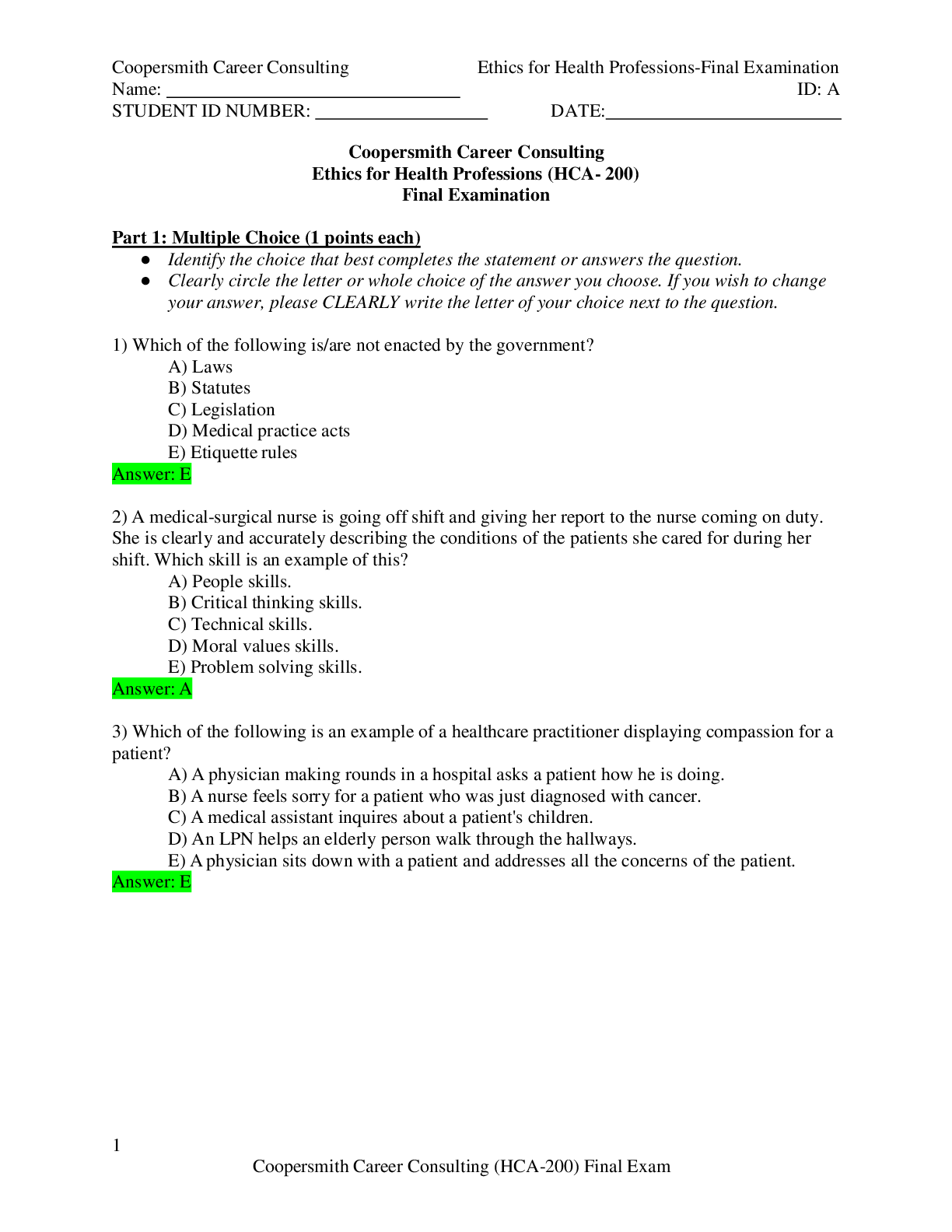


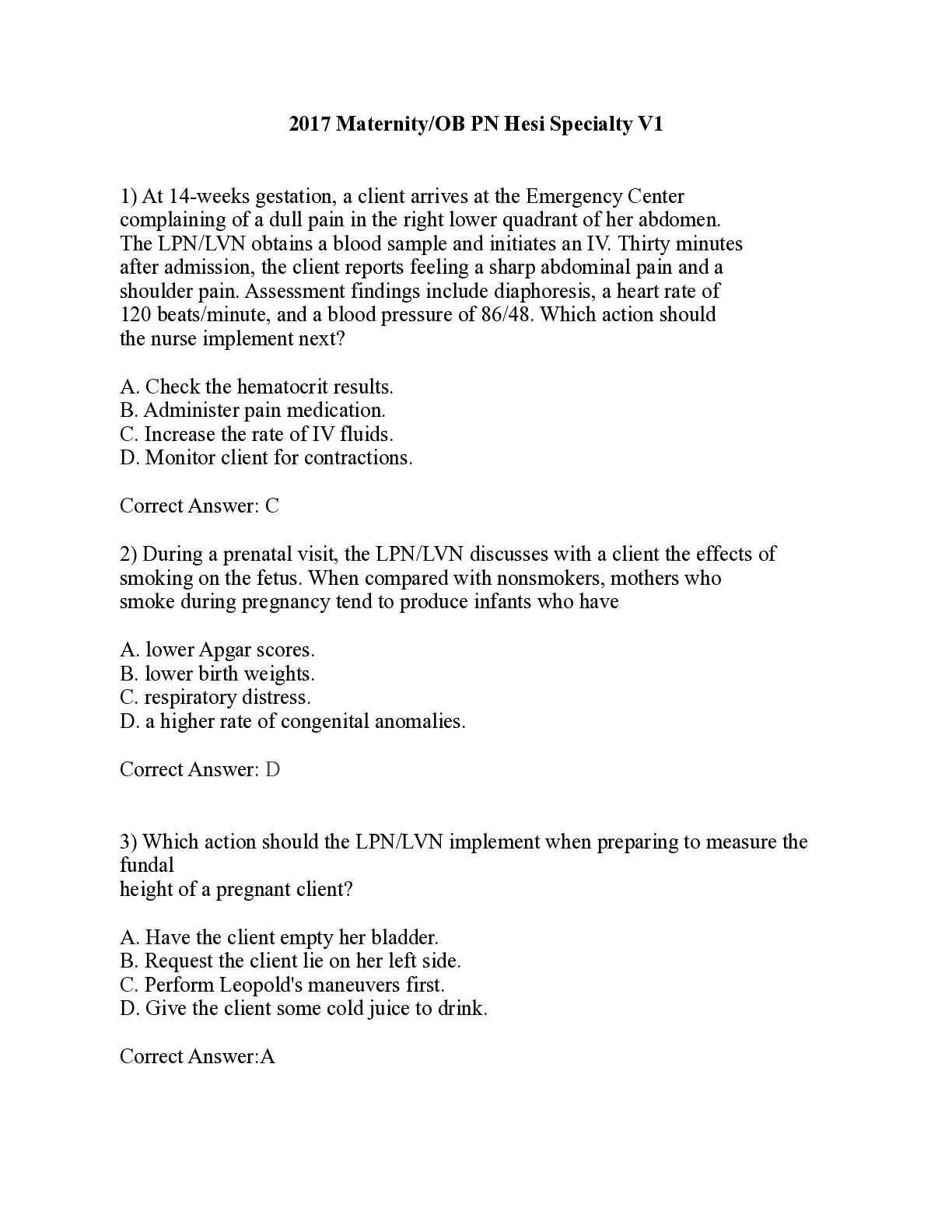
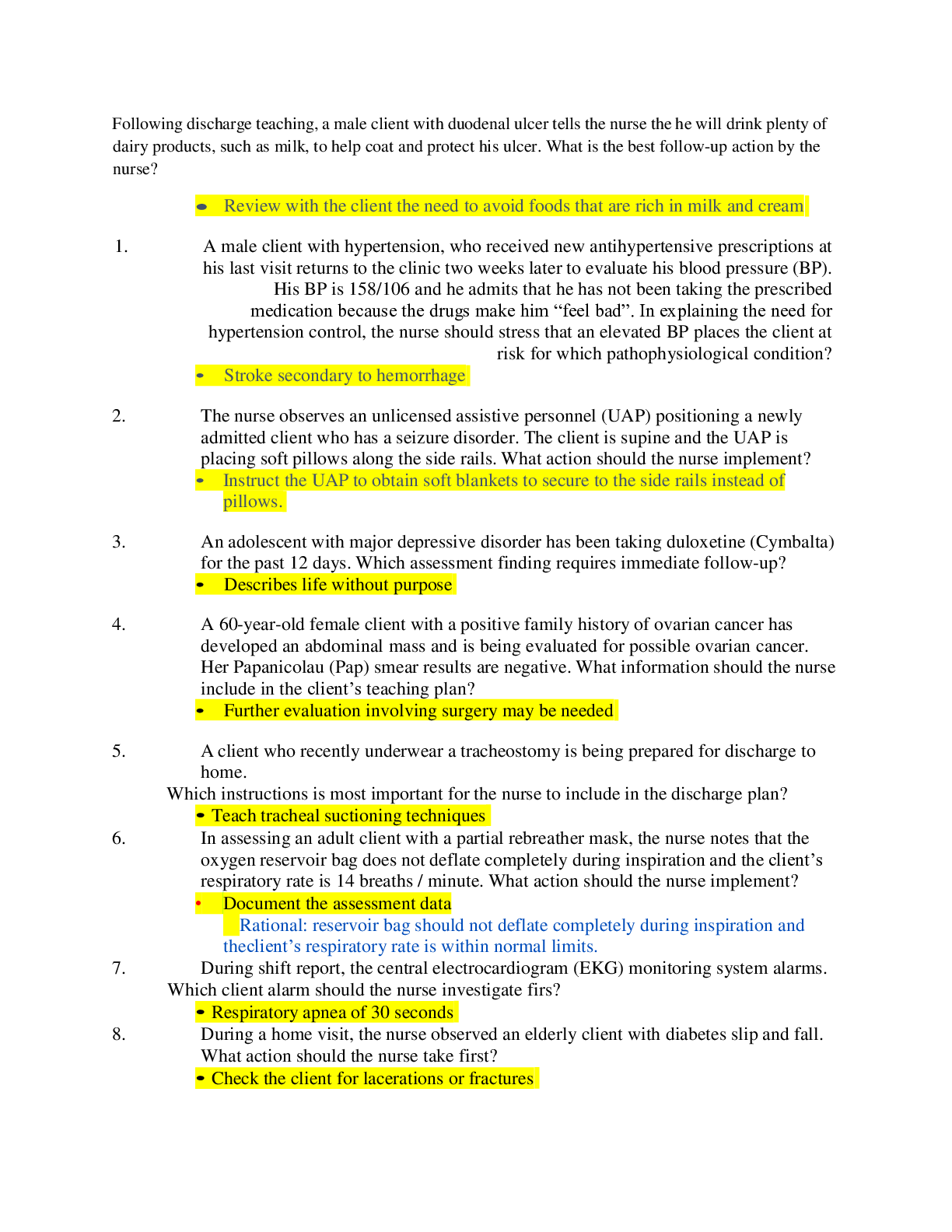
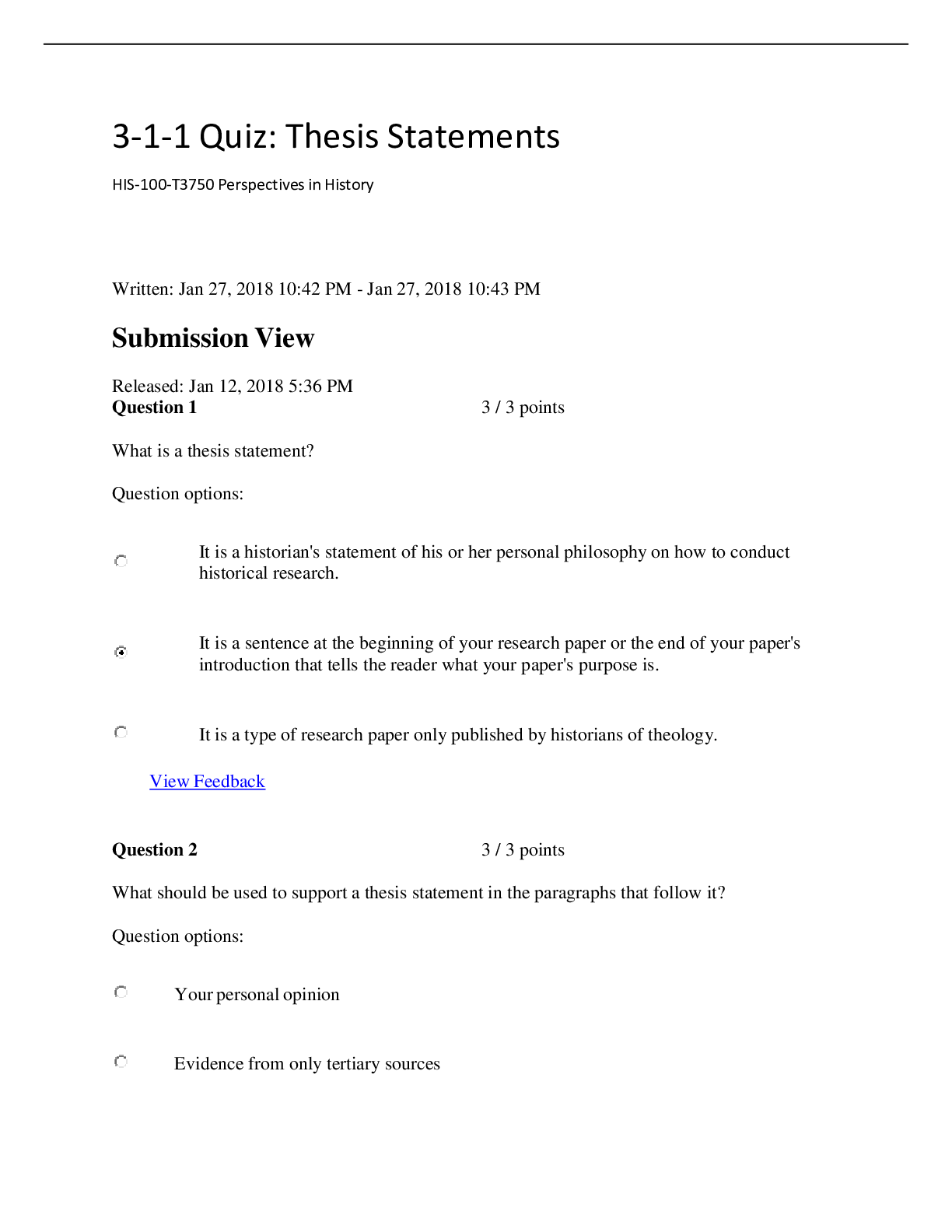
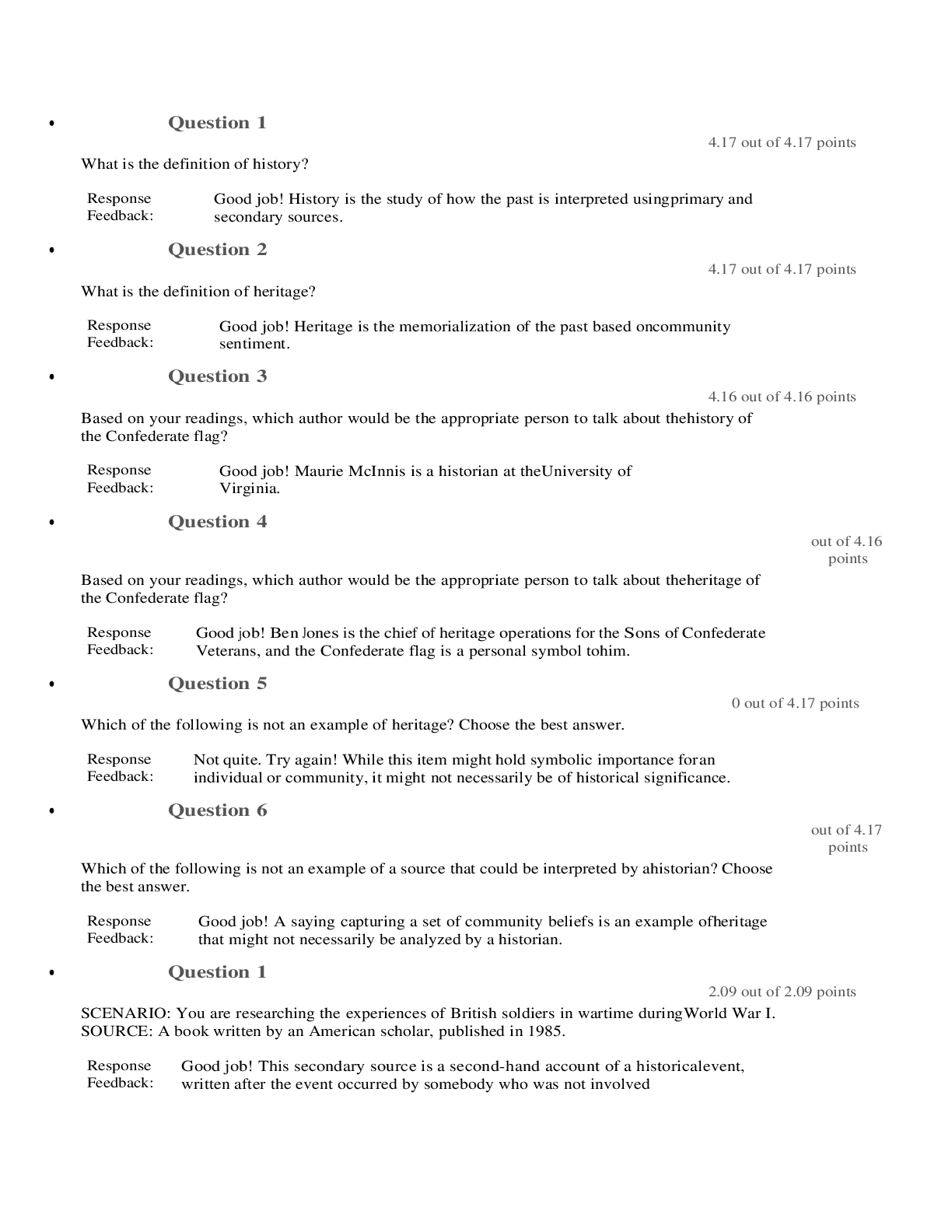


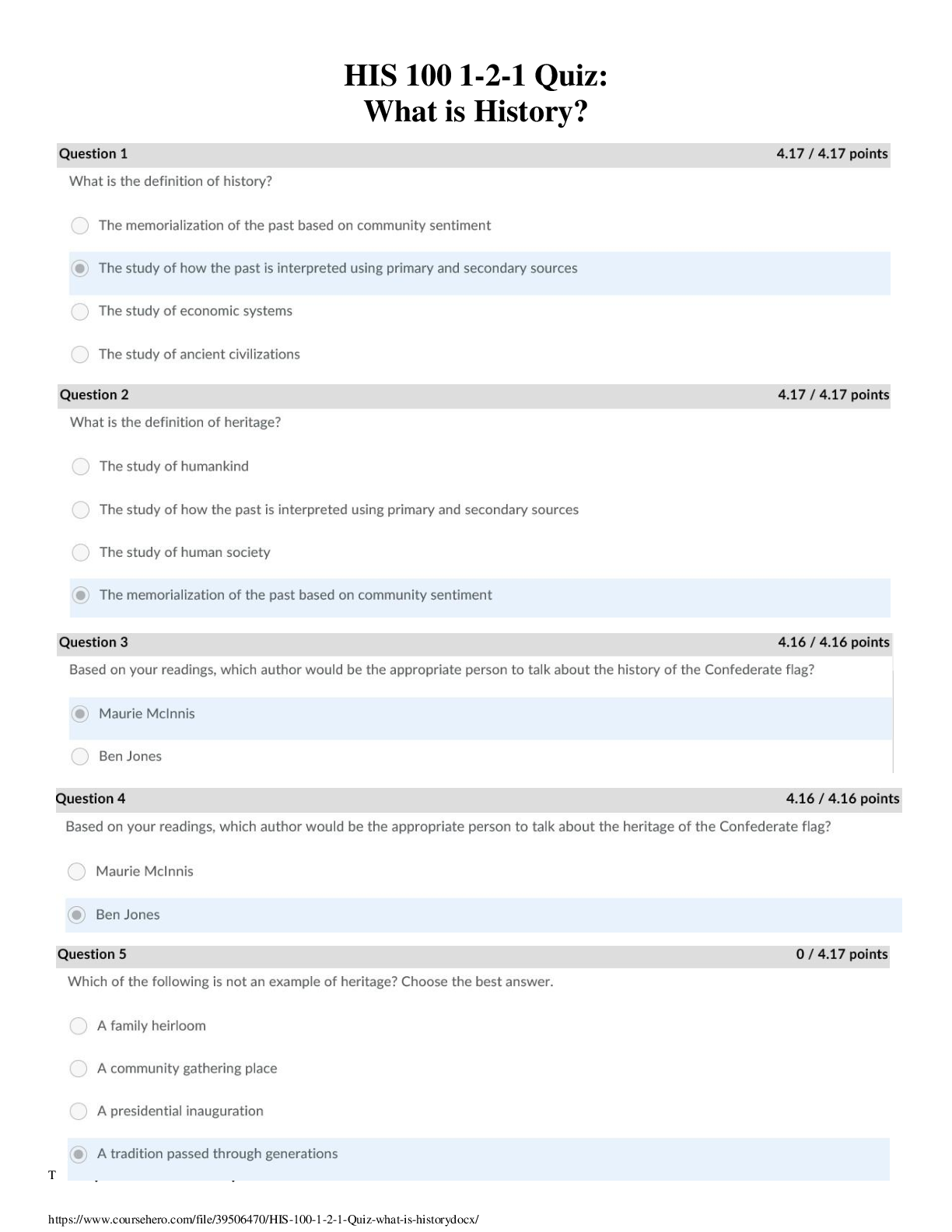





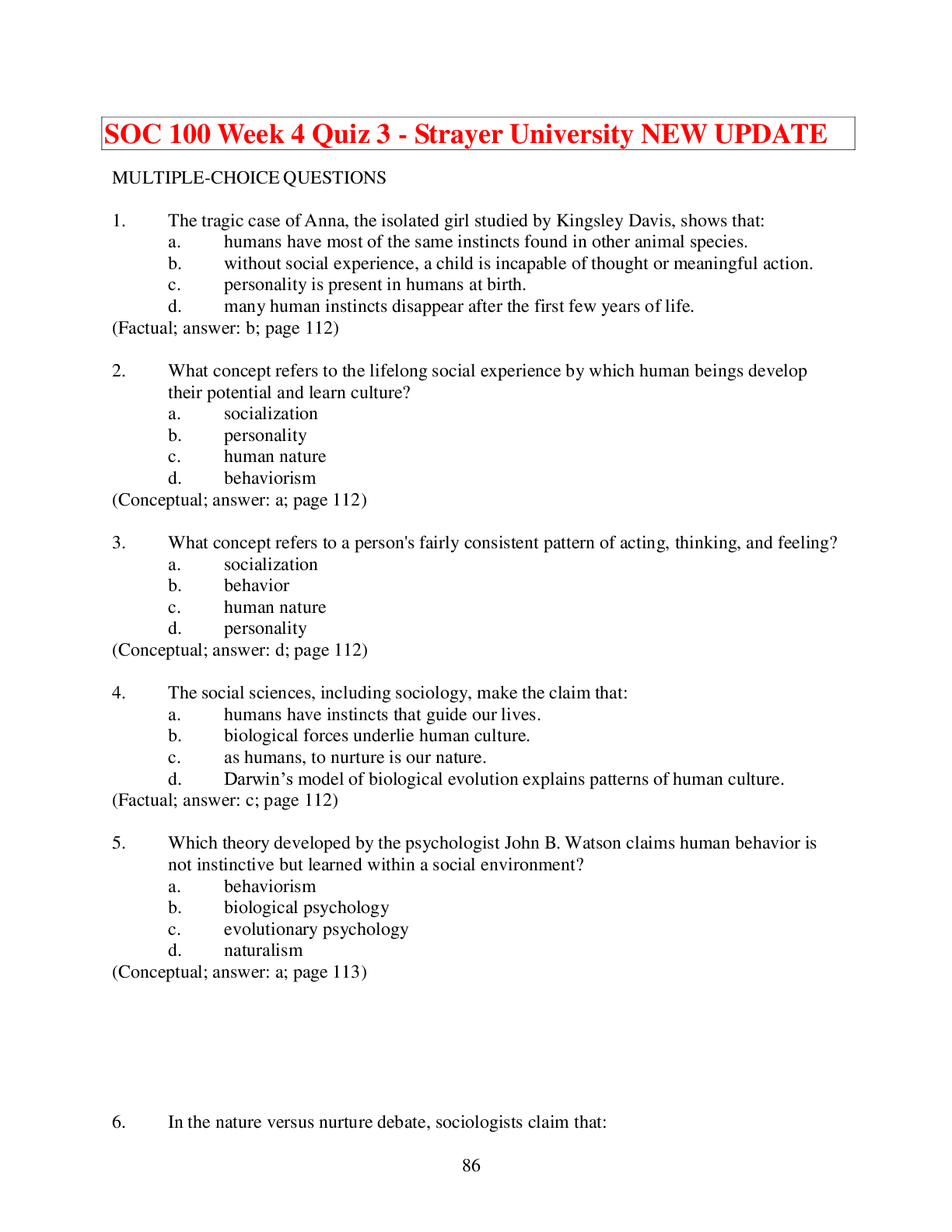
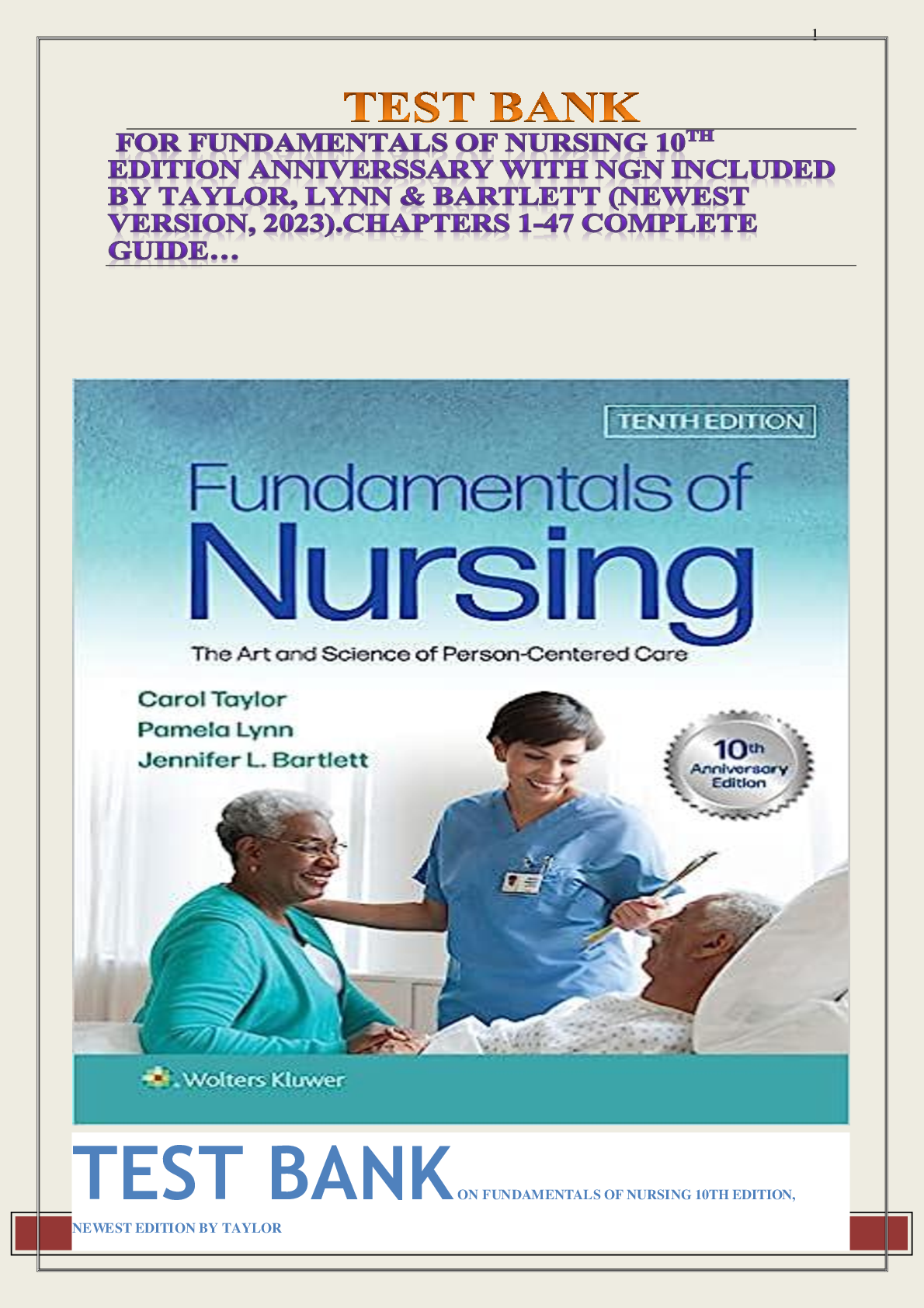
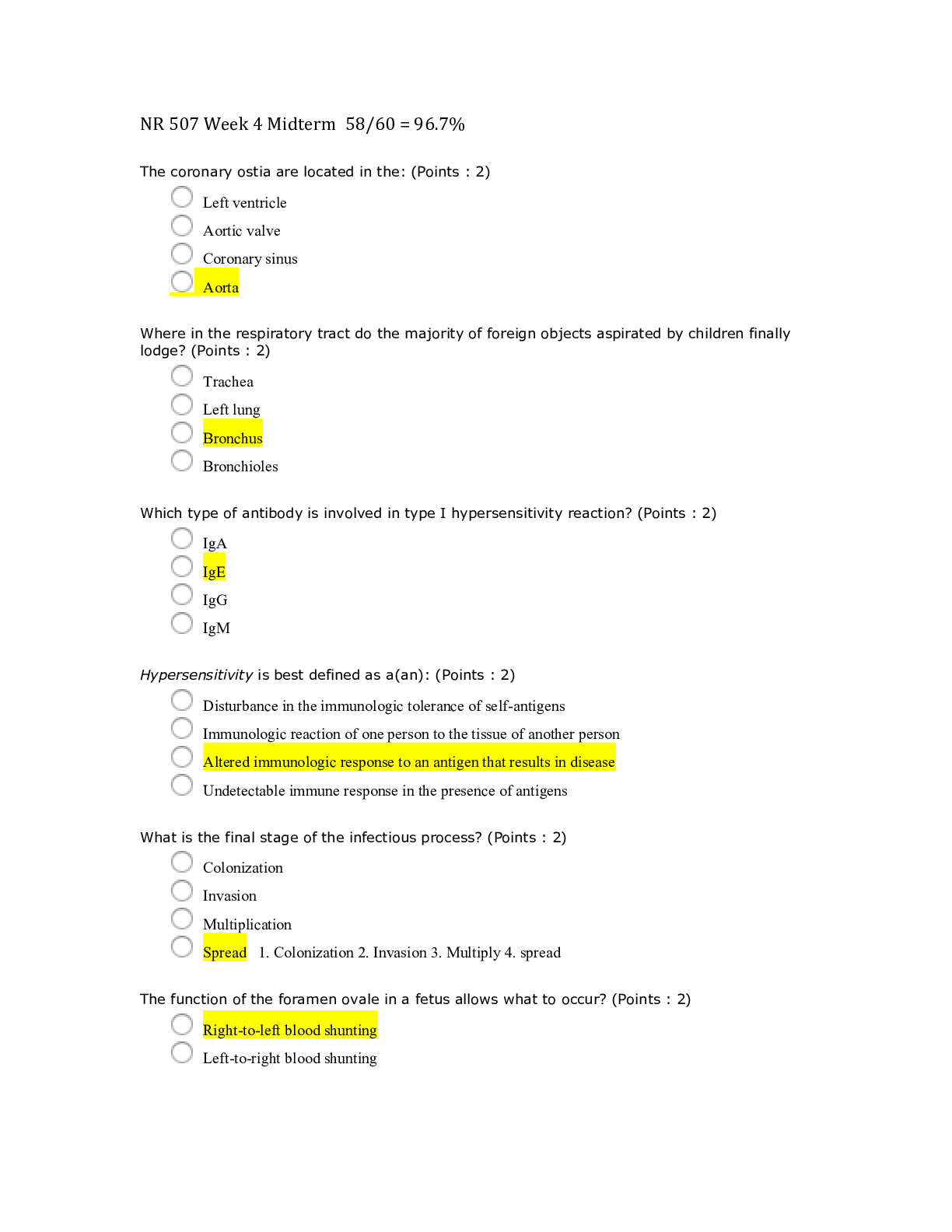

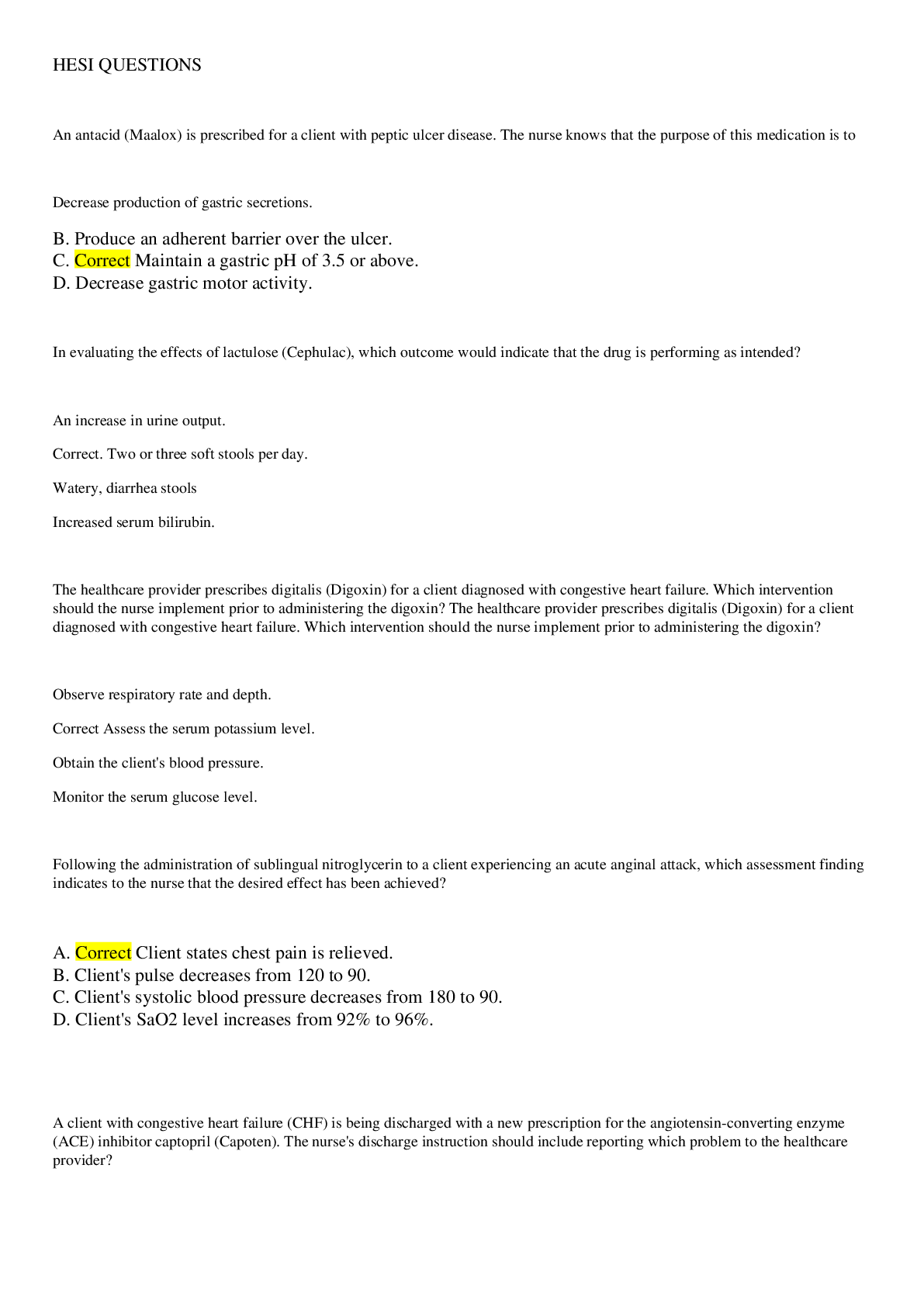
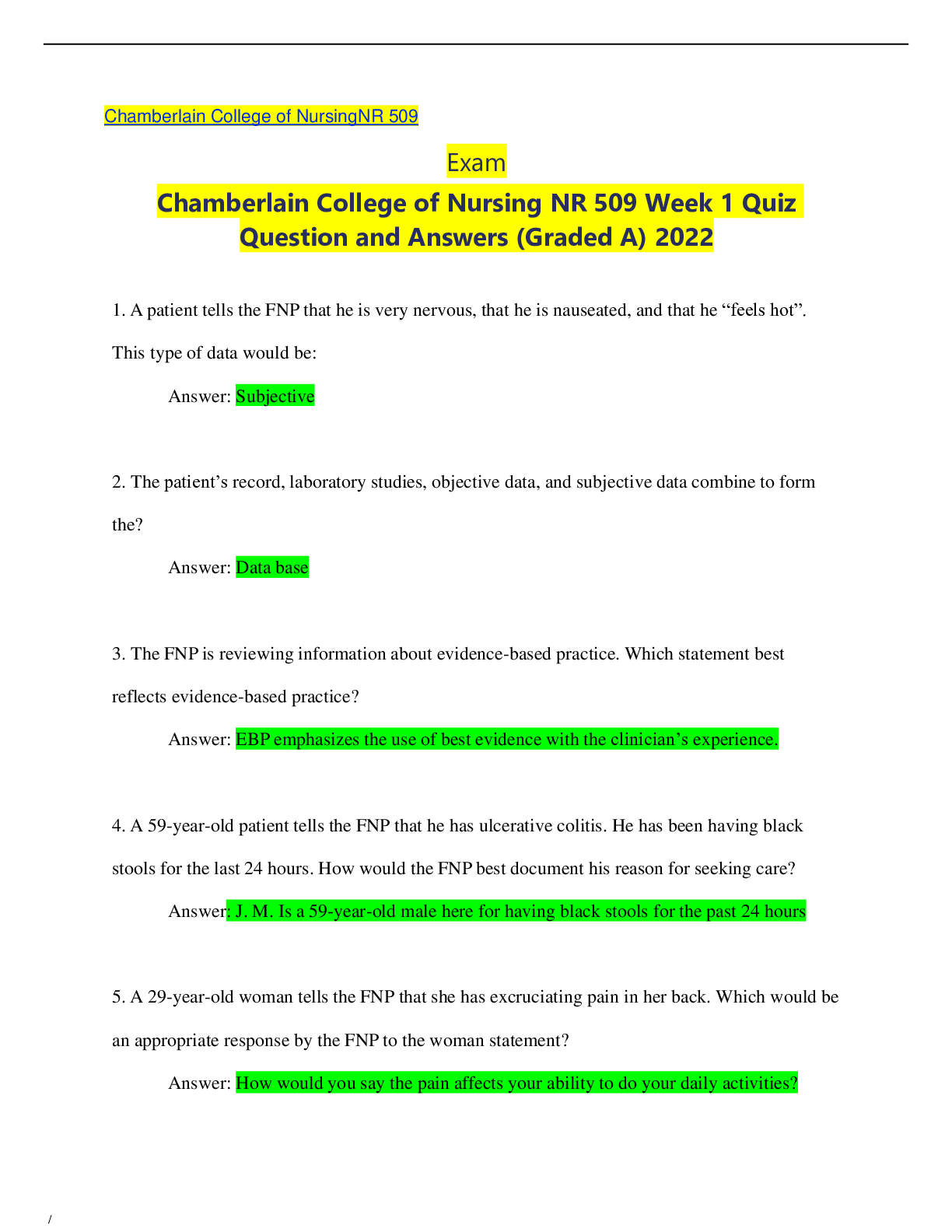

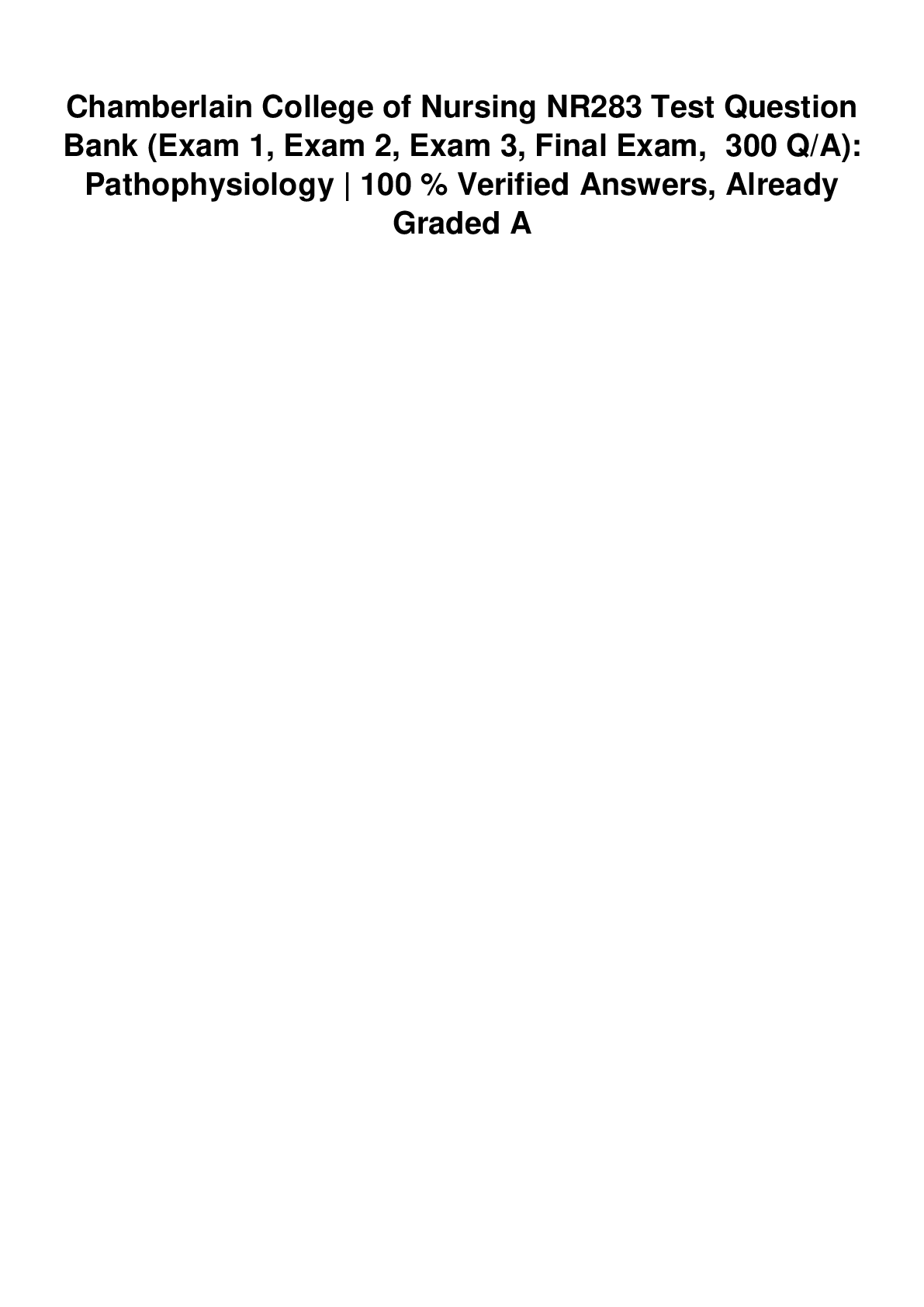
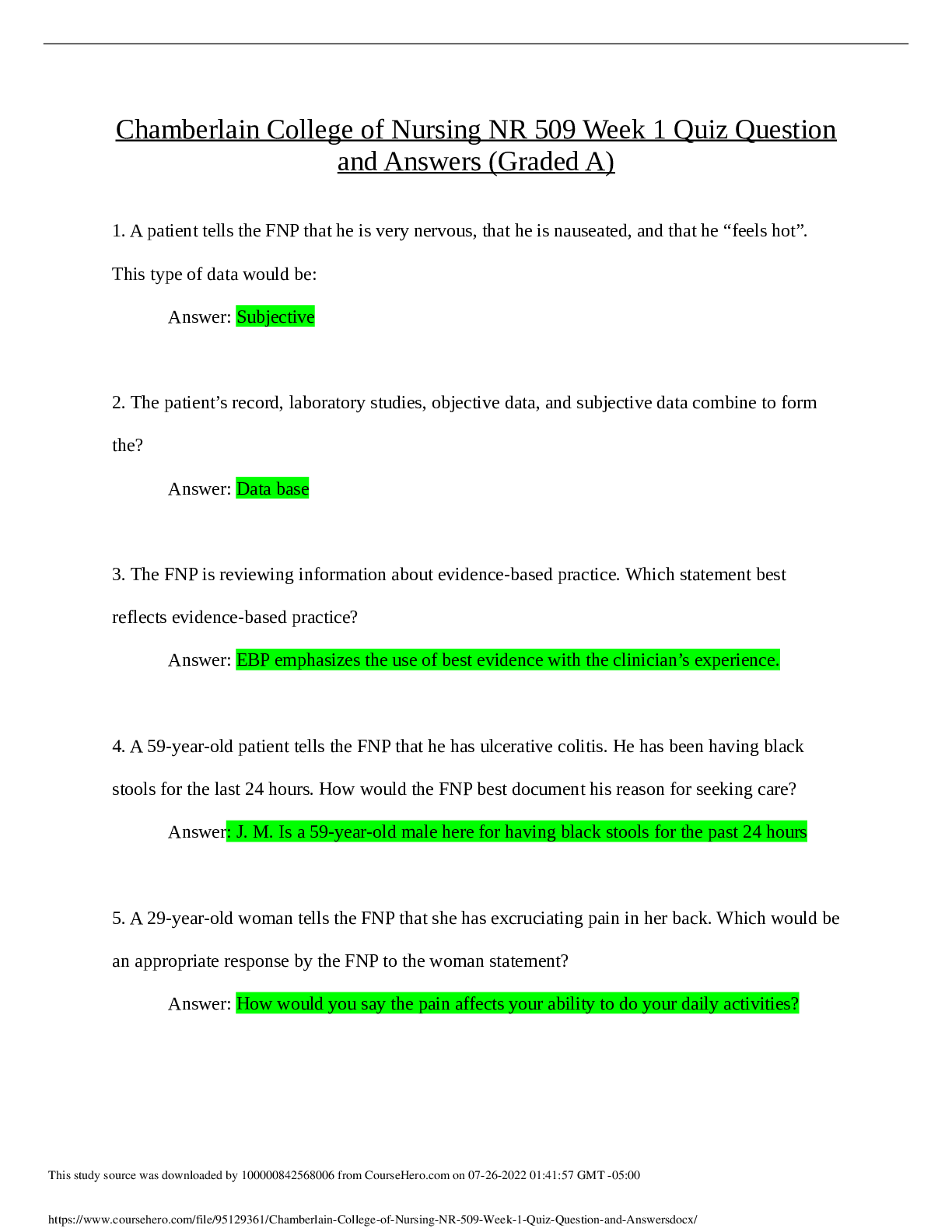
.png)
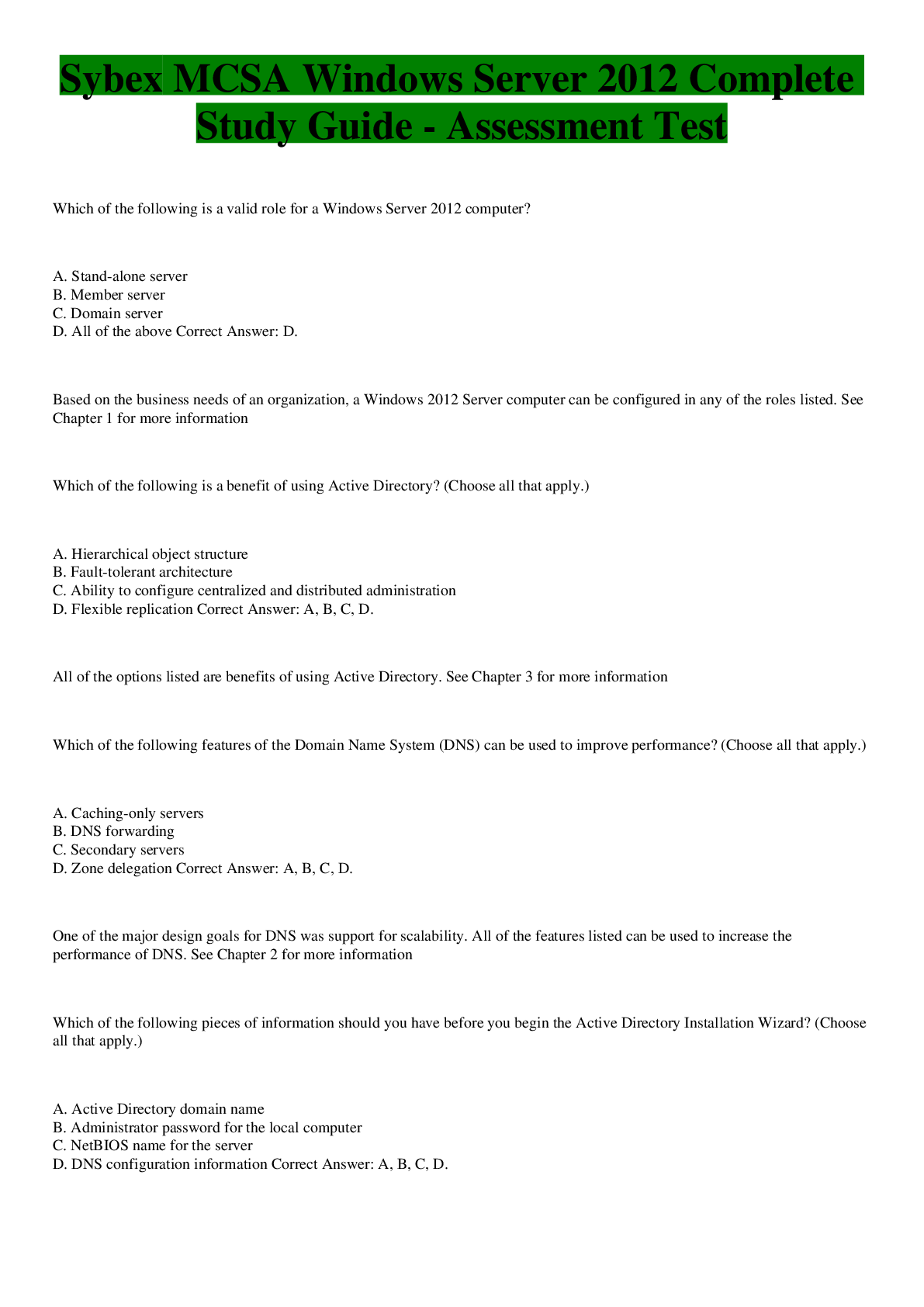
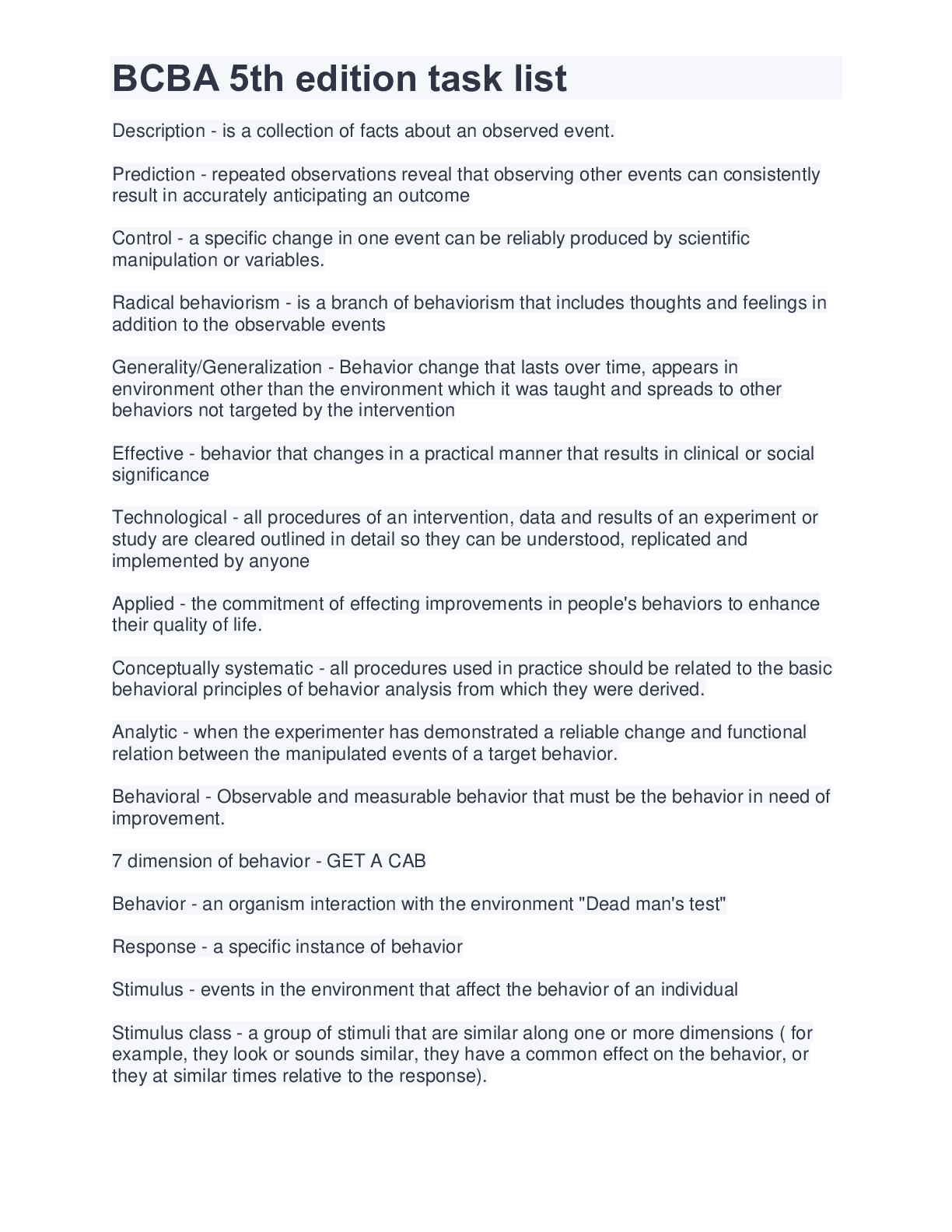
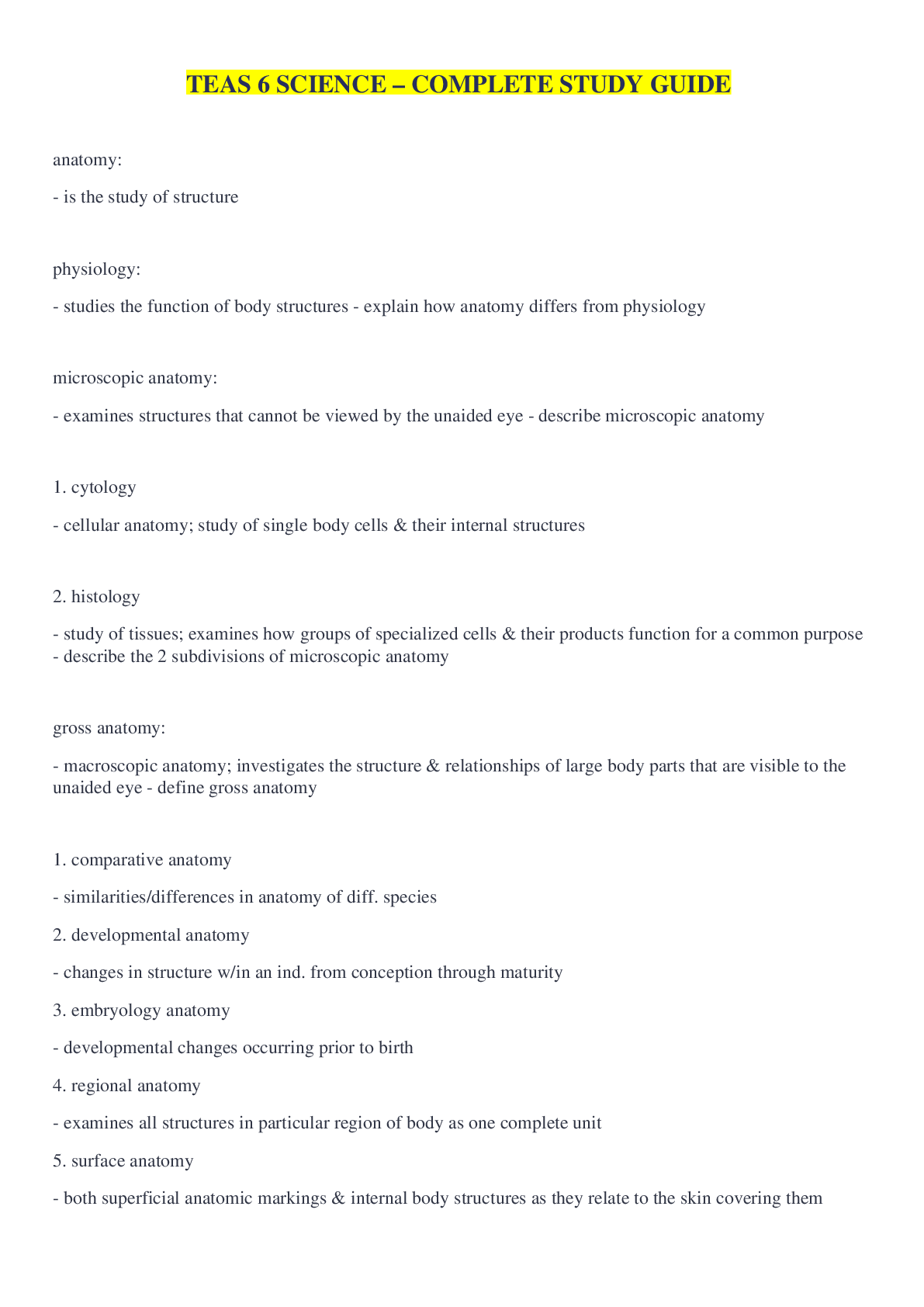
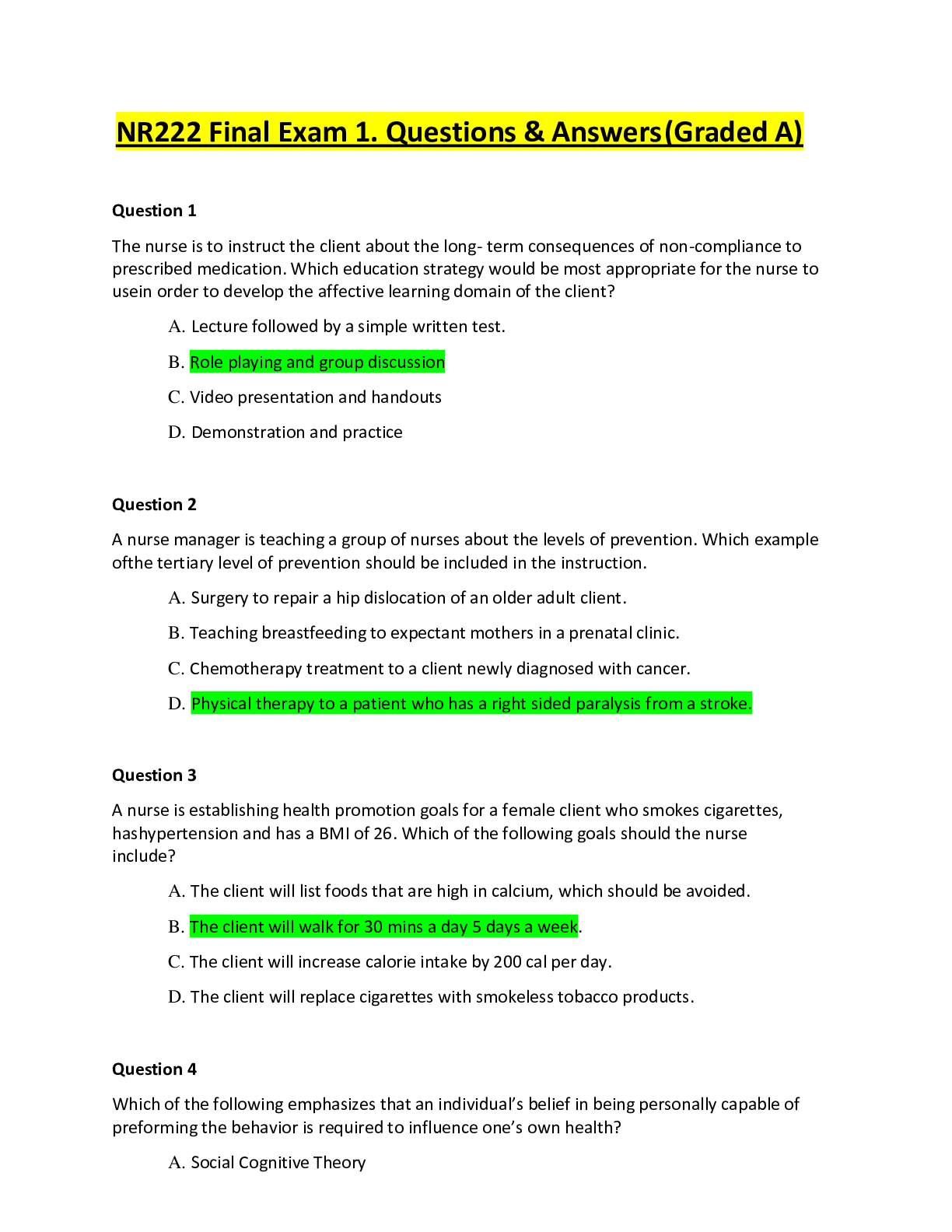
.png)
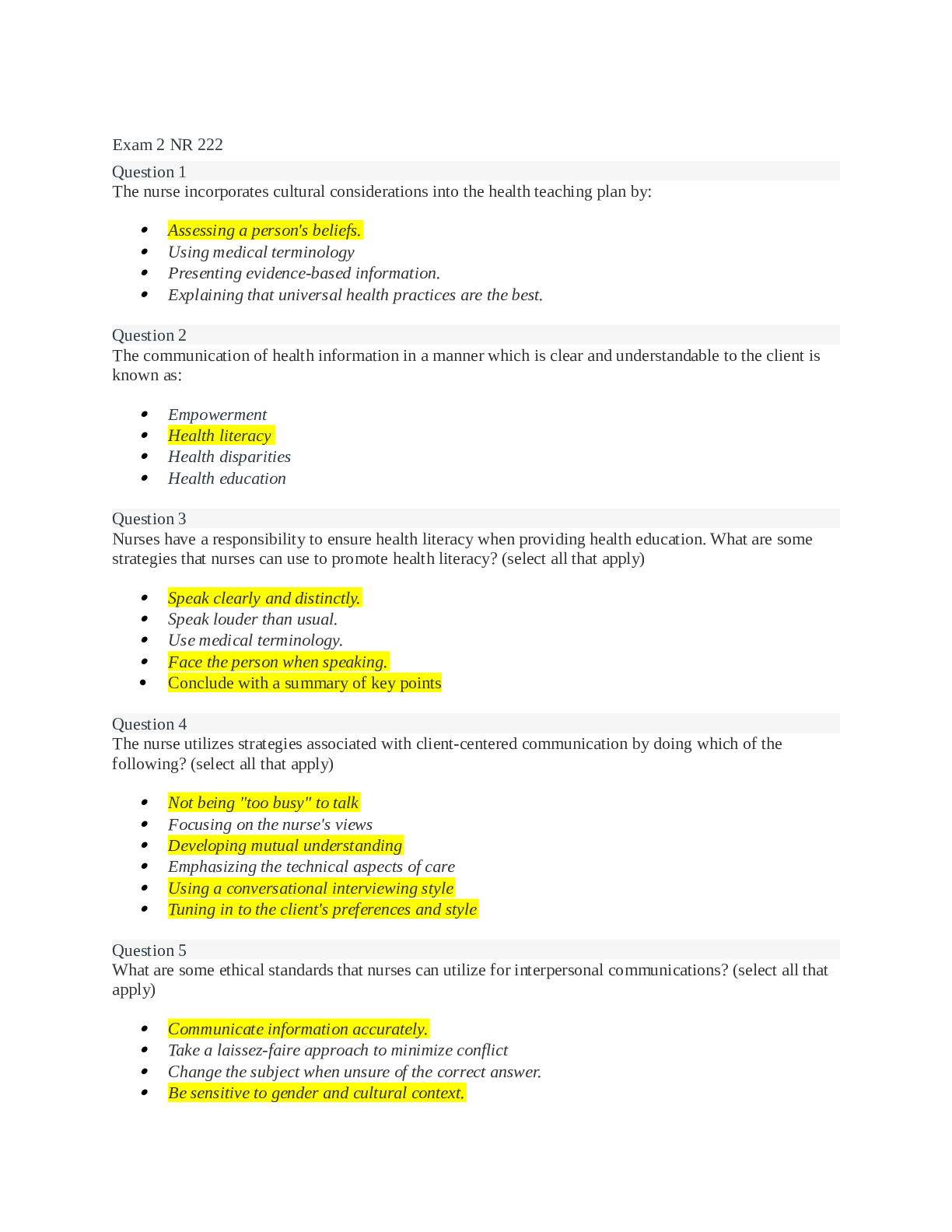


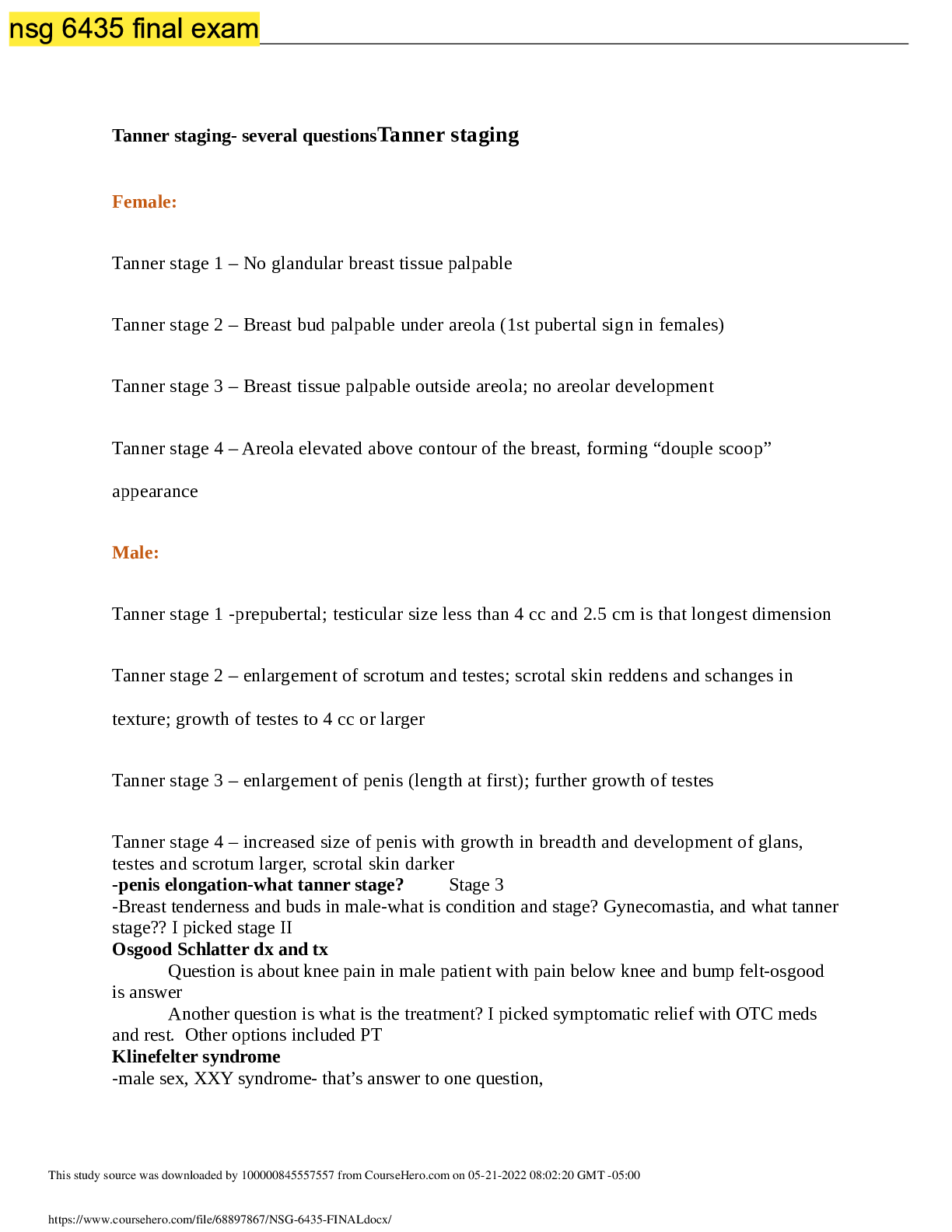
.png)
.png)

